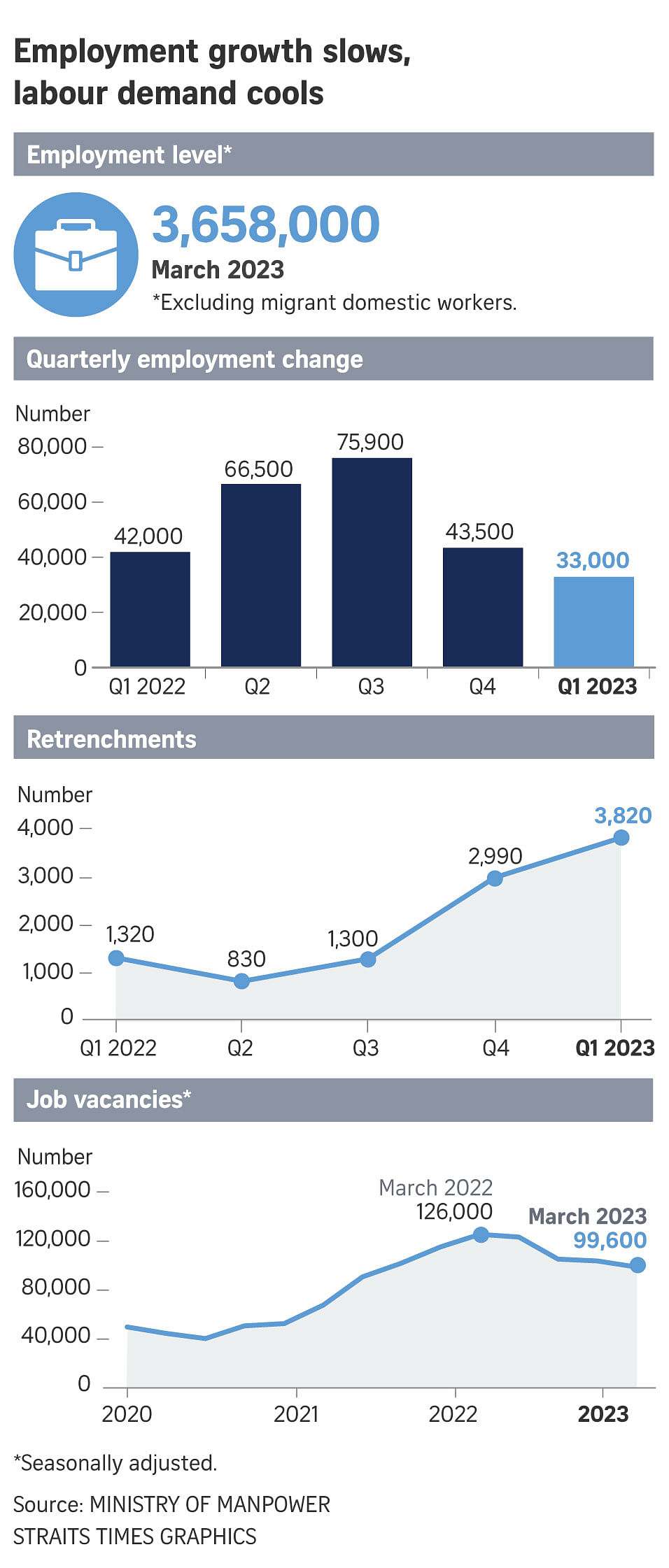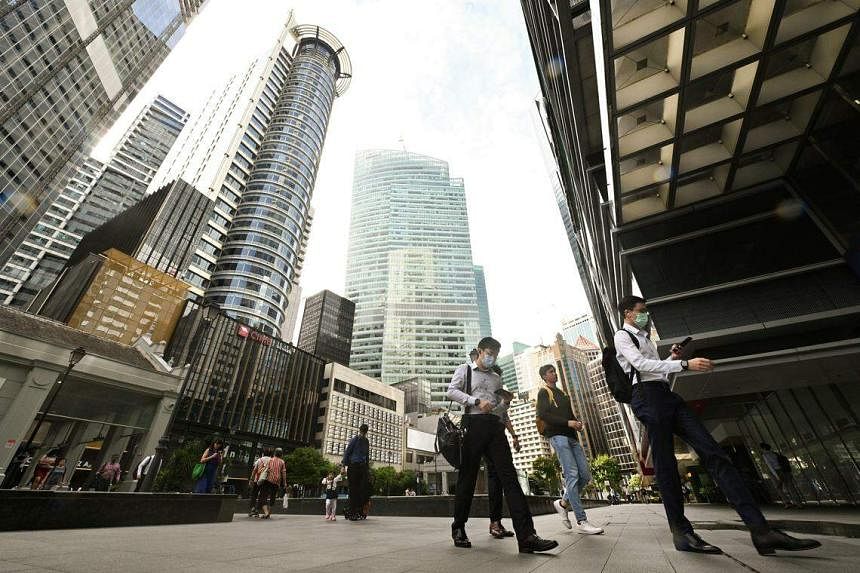SINGAPORE – Singapore showed signs of cooling labour demand in the latest market data released on Thursday, and economists said the job market is likely to toughen further given economic uncertainty and global headwinds.
Total employment expanded at a slower pace, retrenchments rose and job vacancies, while still high, dropped for a fourth straight quarter in the Ministry of Manpower’s (MOM) labour market report for the first quarter of 2023.
Retrenchments rose for the third consecutive quarter to 3,820, from 2,990 in the fourth quarter of 2022.
But testifying to the still tight labour market, 71.7 per cent of retrenched Singaporeans and permanent residents (PRs) were able to find a job within six months. Unemployment rates also remained low.
Responding to the latest data in a Facebook post on Thursday, Labour MP Patrick Tay said: “Although improving, we will need to pay closer watch to the rate of re-entry into employment of those who are unemployed or retrenched.
“Structural challenges such as skills and jobs mismatches continue to be one of the main causes of unemployment in Singapore in the near and medium term.
“As such, we need to double down on our efforts, and build on our momentum to promote and encourage skills upgrading and acquisition to stay ready, relevant and resilient.”
The increase in layoffs came mainly from the outward-oriented sectors of electronics manufacturing (670 to 1,190), information and communications (370 to 560) and financial services (260 to 540).
The total number of employed persons in Singapore grew by 33,000 in the January-to-March period, marking six consecutive quarters of growth. The employment data excludes migrant domestic workers.
The number of employed Singapore citizens and PRs rose by 2,800, driven by gains in the sectors of financial services, professional services, and health and social services.
The remaining increase of 30,200 came from non-resident workers, largely in the construction and manufacturing industries. This also marks the first time that non-resident employment has exceeded its pre-pandemic levels.
Despite total employment in Singapore surpassing pre-pandemic levels by 3.8 per cent, growth has moderated compared with the previous quarter’s increase of 43,500.
There were other signs of cooling labour demand.
Job vacancies declined for the fourth consecutive quarter to 99,600 in March. However, the number of vacancies remained high, in part because non-resident employment has not fully recovered to its pre-pandemic level in sectors like retail trade and food and beverage services.
The ratio of job vacancies to unemployed persons stayed high at 2.28 (228 jobs to 100 persons), but also declined from 2.33 in December 2022.
Still, the overall unemployment rate (1.8 per cent) and resident long-term unemployment rate (0.6 per cent) remained low in March 2023.

In Singapore, long-term unemployment is defined as persons aged fifteen years and over who have been unemployed for 25 weeks – approximately 6 months – or more. Education is recognised as a form of employment.
Across most age and education groups, the jobless rates for Singapore citizens and PRs either stayed low or saw improvement.
MOM said employment growth looks likely to moderate further, given the weakening external demand as well as headwinds in the global economy.
OCBC Bank chief economist Selena Ling said the softening labour market outlook is unsurprising given deterioration in the external environment, including the United States’ regional banking problems, China’s stumbling recovery and the ongoing global semiconductor slump.
She said: “Recent business sentiments have also softened, as reflected in the manufacturing and electronics Purchasing Managers’ Index (PMI) as well as our OCBC SME index. Hiring intentions and employment growth have begun to soften and may moderate in coming months, since growth momentum is likely to slow in the second half of 2023.
“Interestingly, the rising vacancy and retrenchments for some industries like information and communication technologies and financial services suggest some ongoing churn and/or pockets of opportunities within the sector.”
DBS economist Chua Han Teng said that economic uncertainty looks likely to soften labour demand even further. “Even though the resident rate of re-entry into employment (6 months post-retrenchment) remained high and above the pre-pandemic average despite higher retrenchments, the re-entry rate could continue to inch lower as labour demand cools amid an uncertain economic environment,” he said.
RHB senior economist Barnabas Gan said that some short-term weakness in Singapore’s labour market would not be a surprise given the risk of a technical recession, but that this was likely to be temporary.
He added: “The total unemployment rate of 1.8 per cent is certainly something to boast about – Singapore is basically at full employment. The unemployment numbers are at a multi-year low, and suggests that our labour market remains strong and resilient despite economic conditions.”
Mr Gan said that the uptick in non-resident employment numbers could also be a positive indicator.
He pointed out that this is the first time the numbers have surpassed pre-pandemic employment numbers, which could signal that companies are hiring more foreign labour in industries such as services.
It coincides with the uptick in tourism numbers, suggesting growth to be seen in sectors such as the services industry, said Mr Gan.


